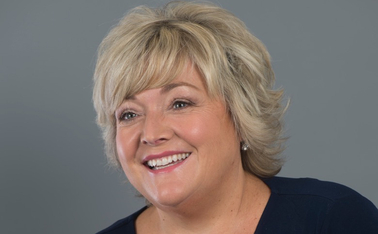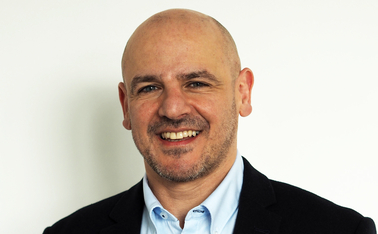
Are brokers bucking the trend of insurtech investment struggles?

According to a new Gallagher Re report, global insurtech investment fell in the fourth quarter of 2022 to its lowest level since the third quarter of 2020. Sophie Locke-Cooper details why some may be struggling even if there are signs of hope among broker insurtechs.
In broker Gallagher Re’s report, it stated that investment declined 57% from the third quarter of 2022. More specifically the UK experienced a deal share decrease from 2.48% to 0.96%.
These stark figures could be seen as a sign that the insurtech bubble has burst or is at least deflating. A trend that perhaps could be supported by the news last year that insurtech motor specialist Zego planned to cut its headcount by 17% and another start-up, Honcho, shut up shop last July.
However, it is not all doom and gloom – and indeed among the broking community there have already been some positive signs in Q4 2022 and Q1 2023.
Stubben Edge raised £5.6m as the business was valued at £175m at the beginning of February. The fintech, which includes a network for appointed representatives, has now raised over £20m to date.
Superscript, the first UK insurtech to land a Lloyd’s of London broker licence in 2020, completed a £45m Series B funding round led by existing investor BHL UK, owner of Comparethemarket in January. The same month, Thomas Carroll Insurance Brokers launched its own insurtech called TCi Futures.
Meanwhile, in November 2022 San Francisco-based Vouch invested in the UK insurtech broker Capsule, a business that has teamed up with Aviva to target high-growth businesses.
Managing director of TCi Futures, David Lewis, believes distribution, or more specifically lack of distribution – something brokers have an edge with – is a strong factor in why certain companies are struggling to attract investors.
He said: “It’s like launching any product, whether its insurtech or otherwise. You can have the best idea in the world but if nobody knows about it then you’re not going to make any money or gain traction.
“I think most insurtechs have focused on the product without necessarily realising that you need to have a marketing strategy and that marketing strategy will cost an awful lot of money. There are fundamentals to doing business and that’s having the people to sell it to and you have to drive traffic to your product.
You can have the best idea in the world but if nobody knows about it then you’re not going to make any money or gain traction.
David Lewis, TCi Futures
“Getting investment works the same way, investors have to see the potential in the market. If there is a flaw in the strategy, like not having distribution, this will be extremely costly and drive an investor away.”
Peter Blanc, executive chairman of Howden Insurance Brokers, echoed Lewis: “The big problem insurtechs face is not having distribution. They don’t have a customer base to actually distribute to. And to create demand in society for any product, even if it is the best product in the world, you need a customer base.
“To create this demand, you have got to either have a distribution strategy or a large marketing budget. The whole world of funding has changed drastically over the last 18 months. Whereas two years ago you could probably raise funding for any good idea.
“A venture capitalist is now looking for a quicker move to profitability and they are demanding more robust business cases.”
Offering a different perspective, Cameron Shearer, CEO of Superscript, said it was able to get the level of investment it recently secured, because the company “doesn’t just focus on having a distribution strategy”.
He added: “We also focus on the underwriting side of things too. It is the underwriting edge that is really important (for us). The other part is having a diversified distribution strategy, so, rather than focusing on direct acquisitions, partnerships are vital to us, as is the advisory side.”
High interest rates
For Chris Kenning, CEO of Stubben Edge Group, another issue is that investors are just not willing to take the punts they once were.
He added: “High interest rates do not help as investors are now more hesitant to take a risk. Many original insurtechs were focused on a direct-to-consumer business model on the basis that they could build a brand, offer better service, and price risks better.
“They achieved growth by undercutting competitors on price but didn’t necessarily achieve the growth they hoped for as they didn’t address the brand, service, and risks priorities.
High interest rates do not help as investors are now more hesitant to take a risk.
Chris Kenning, Stubben Edge Group
“The insurance industry holds large amounts of cash and hasn’t been sitting on its hands. Insurance companies have been digitising systems and moving into that area.
“Where I see strong growth is in those companies that were more insurance than tech, or had new business models that did not just focus on the new tech.”
According to Kenning, there will still be fewer investments, but the ones that are successful will be more oversubscribed.
Reduced start-ups
Chief executive of Vittoria Hub, Nicolò Soresina, is another who agrees that reduced investment and venture capital interest in the last 12 months had contributed to the overall start-up slowdown.
Soresina commented: “The reasons are to be found in the overall venture capital trends across Europe due to global uncertainties in capital and equity markets.
“Plus, the fact that a few well-known wanna-be insurtech ‘unicorns’ failed to hit their expected targets, which probably built up the climate of uncertainty amongst structured investors.”
On the other hand, insurtechs struggling to find investment could be simply having issues with their underlying risk selection, according to Shearer.
He stated: “If you look at Lemonade, for example, they had a great distribution model, they were able to acquire customers but actually their underwriting was not doing so well. So off the back of that, the venture capitalist community started focusing on that underlying issue.
“In other words, how a company needs to underwrite better to make sure that it has that profitable book of business behind the scenes.”
Shearer stressed that no matter how exciting an insurtech’s offering is, it must always focus on profit, making sure it is selecting good risks and delivering a return for the supply chain and carriers [that support it].
For all the latest industry news direct to your inbox, sign up for our daily newsletter.
Only users who have a paid subscription or are part of a corporate subscription are able to print or copy content.
To access these options, along with all other subscription benefits, please contact info@insuranceage.co.uk.
You are currently unable to print this content. Please contact info@insuranceage.co.uk to find out more.
You are currently unable to copy this content. Please contact info@insuranceage.co.uk to find out more.
Copyright Infopro Digital Limited. All rights reserved.
You may share this content using our article tools. Printing this content is for the sole use of the Authorised User (named subscriber), as outlined in our terms and conditions - https://www.infopro-insight.com/terms-conditions/insight-subscriptions/
If you would like to purchase additional rights please email info@insuranceage.co.uk
Copyright Infopro Digital Limited. All rights reserved.
You may share this content using our article tools. Copying this content is for the sole use of the Authorised User (named subscriber), as outlined in our terms and conditions - https://www.infopro-insight.com/terms-conditions/insight-subscriptions/
If you would like to purchase additional rights please email info@insuranceage.co.uk







